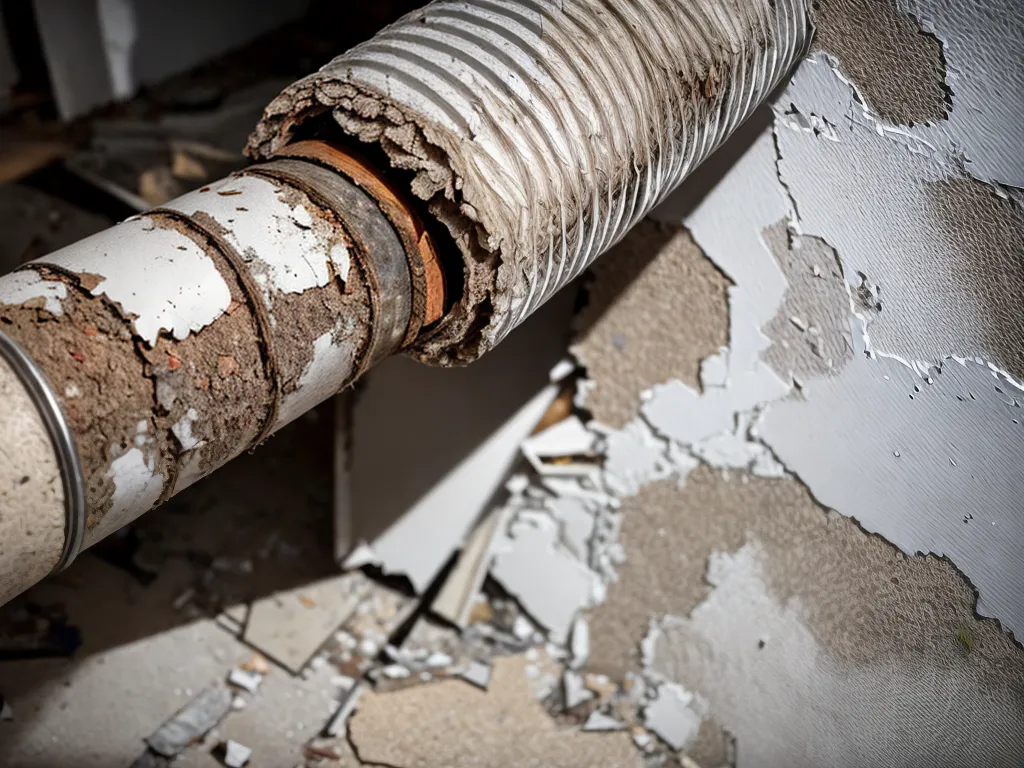
The Forgotten Dangers of Asbestos in Older Homes
Asbestos is a naturally occurring silicate mineral that was commonly used as an insulating and fire-retardant material in buildings constructed before the 1980s. However, asbestos is also a known carcinogen that can cause serious illnesses like mesothelioma and asbestosis when inhaled. Many homeowners are unaware that asbestos may still be present in older homes, exposing them and their families to potential health risks. As a homeowner living in an older house, I felt it was important to educate myself about the dangers of asbestos and steps I could take to protect my family.
Where Asbestos Hazards May Lurk in Older Homes
Asbestos was widely used in many building products before safety concerns led to regulations curtailing its use. In older homes, asbestos may still be found in:
- Insulation - Pipe and duct insulation, blown-in insulation in walls or attics
- Roofing and siding - Asphalt, vinyl, and cement roofing/siding products
- Walls and ceilings - Popcorn ceilings, joint compound, ceiling tiles, wallboard
- Flooring - Vinyl tiles, vinyl sheet flooring
- Other - Cement products, HVAC ductwork, old appliances
Even small exposures to deteriorating asbestos in an older home can be dangerous if fibers become airborne. The EPA warns that there is no known safe level of asbestos exposure.
Health Risks Posed by Asbestos Exposure
Inhaling or ingesting asbestos fibers over time can lead to serious health issues:
- Asbestosis - Scarring of the lungs that causes shortness of breath and coughing
- Lung cancer - Asbestos is a known carcinogen that causes cellular changes leading to lung cancer
- Mesothelioma - A rare cancer affecting the protective lining of the lungs and abdomen
- Other cancers - Evidence links asbestos to laryngeal and ovarian cancers as well
Smokers exposed to asbestos face a risk of developing lung cancer that is greater than the individual risks from asbestos and smoking added together.
Signs of Asbestos-Related Illness
The diseases caused by asbestos exposure often have long latency periods, meaning symptoms may not appear until decades after the initial exposure. Some common signs of asbestos-related illness include:
- Shortness of breath, wheezing, or hoarseness
- A persistent cough that gets worse over time
- Blood in the cough sputum
- Unexplained weight loss
- Chest, shoulder, or abdominal pain
If any of these symptoms manifest, it is important to see a doctor as soon as possible for evaluation and treatment. Early detection can improve prognosis in asbestos-related diseases.
Testing My Home for Asbestos
Since asbestos in older homes is often hidden, I decided to hire an asbestos testing professional to sample various materials and determine if asbestos was present. Some tips for asbestos testing:
- Hire a qualified professional with experience testing for asbestos
- Make sure they follow EPA testing protocols
- Have them take samples from insulation, walls, flooring, etc.
- Request a written report detailing the results
- Be prepared to pay $200-$400 for comprehensive testing
Knowing whether or not my home contains asbestos will allow me to make informed decisions about safely managing or removing any hazards.
Safely Managing Asbestos in the Home
If asbestos is identified in my home, there are methods to minimize exposure:
- Leave undamaged asbestos materials alone if possible
- Seal damaged areas with paint or other coatings
- Enclose asbestos with new materials to prevent fiber release
- Hire professionals certified in asbestos removal for any abatement
- Use wet methods and HEPA vacuums if removing asbestos myself
- Wear proper protective equipment during work in contaminated areas
- Dispose of asbestos waste according to local regulations
It is usually safest to leave intact asbestos materials undisturbed. Only damaged or deteriorating materials with high potential for airborne fiber release should be removed.
Replacing Asbestos Roofing in My Home
One project I faced was needing to replace my home's older asbestos cement roof shingles. To do this safely:
- I hired a certified asbestos abatement company to remove and dispose of the old shingles
- They sealed off the work area and used wet removal techniques to minimize fibers
- The crew wore proper respirators, suits, gloves, and footwear
- The asbestos shingles were double-bagged and hauled to a landfill approved for asbestos
- They thoroughly cleaned the site after completion
- New non-asbestos fiber cement shingles were installed
Even though this cost more than DIY roofing, it gave me peace of mind knowing the project was completed safely by certified asbestos professionals.
Teaching My Children About Asbestos Risks
Since my home's construction date means it likely contains some asbestos, I talked to my children about the risks:
- I explained what asbestos is and why it can be dangerous
- We discussed how asbestos fibers are invisible and can be breathed in
- I showed them areas like the basement ceiling that might contain asbestos
- I taught them to never touch or disturb any suspected asbestos
- They know to tell me immediately if materials look damaged or are releasing dust
- We agreed they would not enter areas closed off for abatement work
Educating my children empowers them to make smart choices and avoid risky exposures. Knowledge and vigilance are key to keeping my family safe.
Conclusion: Prioritizing Asbestos Awareness
After researching asbestos hazards in older homes, I feel much more informed about risks that were previously "out of sight, out of mind." Key takeaways for any homeowner with an older house:
- Test for asbestos and identify any problem areas
- Inform yourself on proper asbestos safety procedures
- Protect your family by minimizing exposures
- Be proactive about properly addressing any necessary abatement
- Educate those living in the home about asbestos risks
Staying vigilant about this hidden hazard will allow me to take steps to protect my family's health and safety in our older home. I encourage others in similar situations to make asbestos awareness a priority.